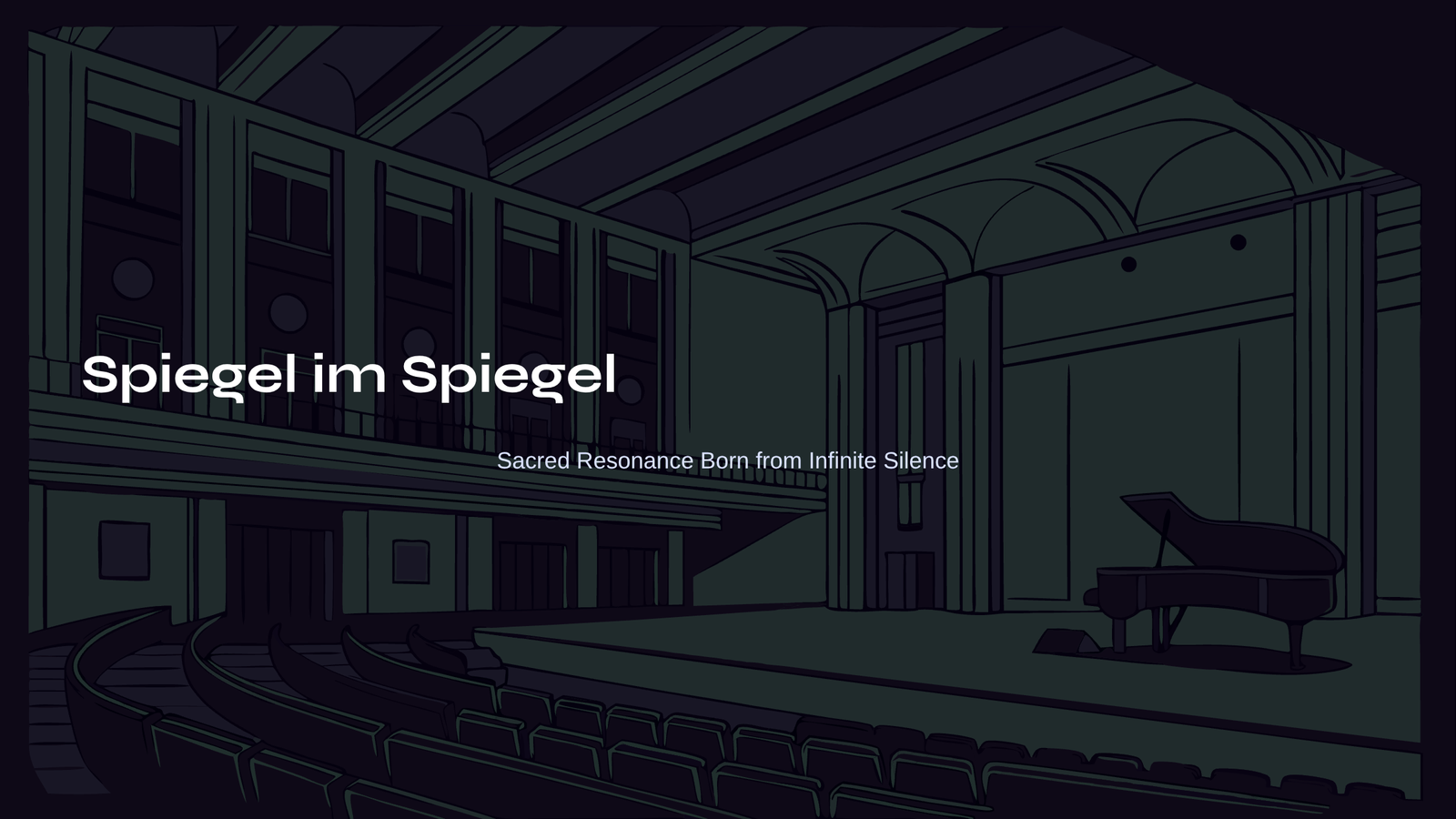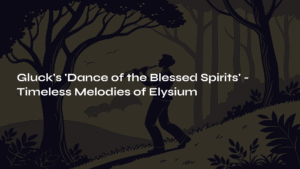Table of Contents
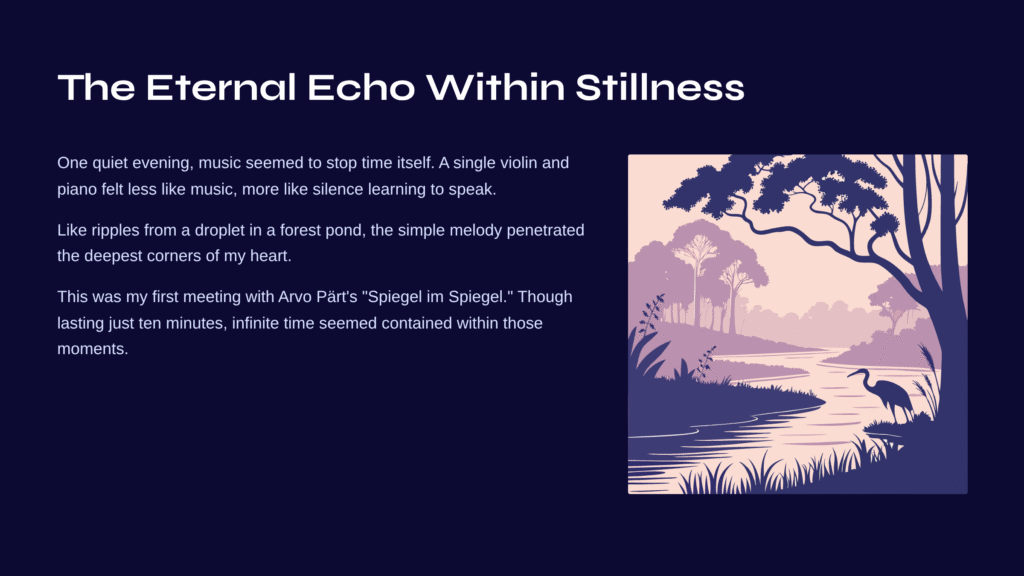
The Eternal Echo Within Stillness
One quiet evening, I encountered music that seemed to stop time itself. The sound created by a single violin and piano felt less like music and more like silence learning to speak. Like ripples from a droplet falling into a deep forest pond, the simple melody penetrated into the deepest corners of my heart.
This was my first meeting with Arvo Pärt’s “Spiegel im Spiegel” (Mirror in the Mirror). Though it lasted just over ten minutes, infinite time seemed contained within those moments. Have you ever experienced something similar? Those instances when music halts time and caresses the soul?
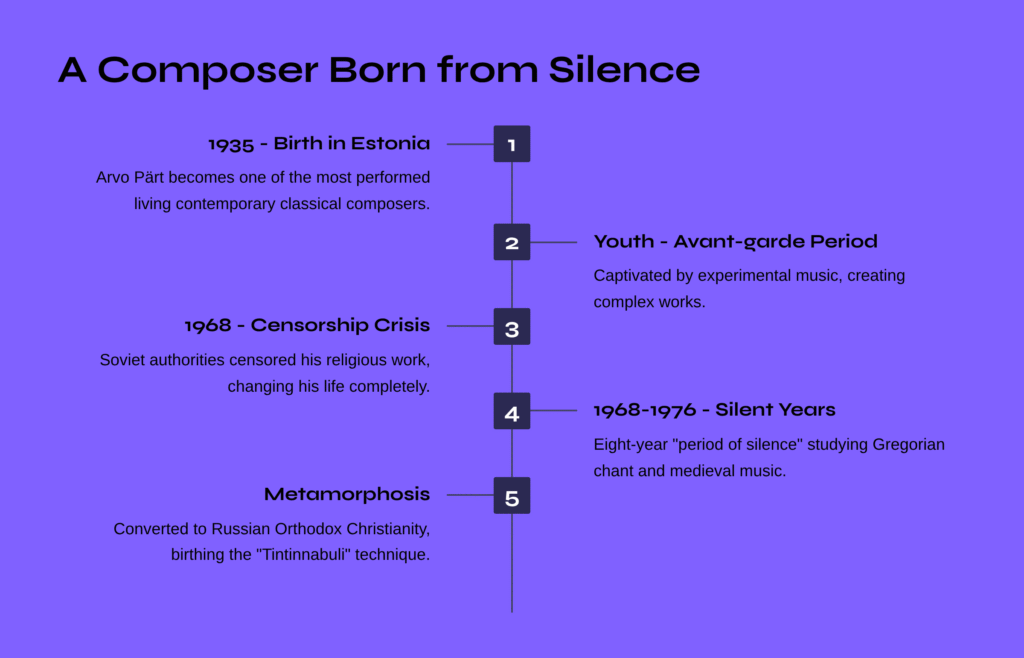
A Composer Born from Silence: Arvo Pärt
Arvo Pärt, born in Estonia in 1935, remains one of the most performed living contemporary classical composers. His life reads like a novel. In his youth, he was captivated by the avant-garde music of his time, creating complex and experimental works. However, in 1968, after presenting a religious work, he faced censorship from Soviet authorities, and his life changed completely.
For the following eight years, Pärt entered a “period of silence.” During this time, he deeply studied Gregorian chant and medieval music, eventually converting to Russian Orthodox Christianity. Like a butterfly undergoing metamorphosis in its chrysalis, this period of silence gave birth to his unique musical language: the “Tintinnabuli” technique.
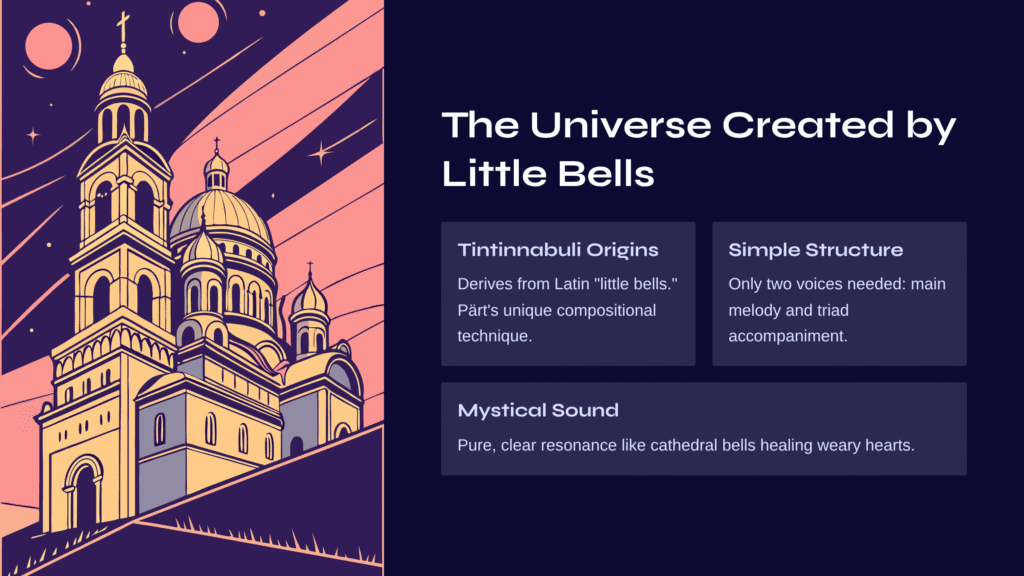
The Universe Created by Little Bells: The Secret of Tintinnabuli
“Tintinnabuli” derives from the Latin word for “little bells.” This compositional technique created by Pärt is remarkably simple. Only two voices are needed: one carries the main melody, while the other creates accompaniment using only the notes of the triad.
Yet the sound produced by this simplicity is truly mystical. Like the pure, clear resonance of bells heard from a cathedral, it creates music that heals hearts wearied by complex contemporary compositions.
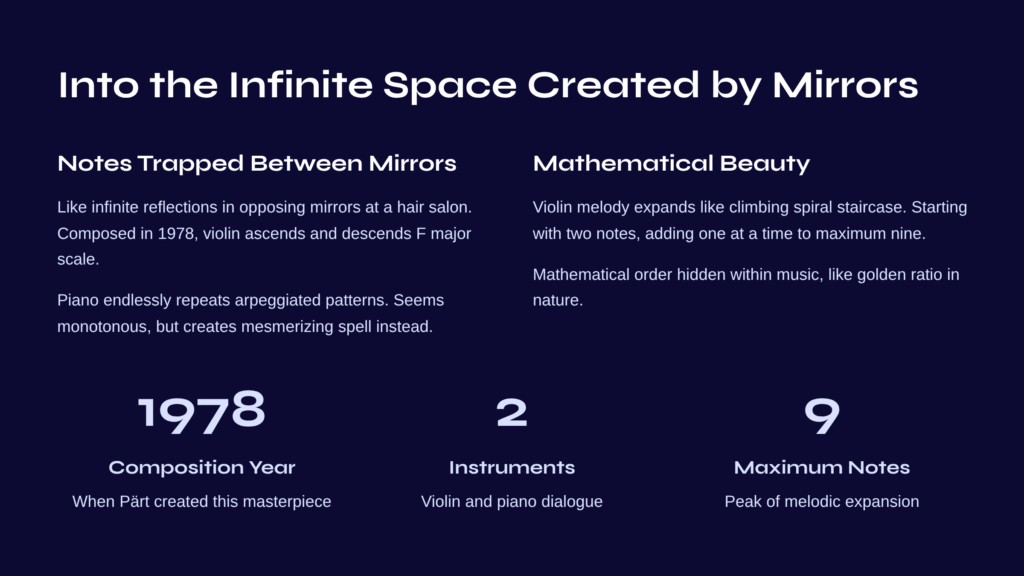
Into the Infinite Space Created by Mirrors
Notes Trapped Between Two Mirrors
What comes to mind when you hear the title “Spiegel im Spiegel”? I think of a scene from childhood at the hair salon—the infinite reflective images created by mirrors placed front and back. Pärt’s music feels exactly like this.
Composed in 1978, the violin ascends and descends along the F major scale, always returning to the note A. The piano endlessly repeats the same arpeggiated pattern. It might seem monotonous, but it’s quite the opposite. Instead, you become mesmerized, as if under a spell.
Mathematical Beauty That Creates Emotion
Pärt employed a truly ingenious structure in this piece. The way the violin melody gradually expands resembles climbing a spiral staircase. Starting with two notes, then three, four… adding one note at a time until reaching a maximum of nine notes.
Isn’t it fascinating that such mathematical order exists hidden within music? Like the golden ratio or Fibonacci sequence in nature, it seems the universe’s order is embedded within music as well.

The Moment Time Stopped: My Experience of Infinite Beauty
When I first heard this music, I had a truly strange experience. Looking at my watch, only ten minutes had passed, yet I felt the deep tranquility of having meditated for hours. How can such simple music create such profound emotion?
Perhaps it’s because Pärt filtered out everything unnecessary from the music, leaving only the purest essence. Like a Zen master conveying enlightenment in a single phrase, this music speaks directly to the depths of our hearts without complex explanations.
Following the violin’s melody, sometimes I feel nostalgia, sometimes I see hope, sometimes I receive deep comfort. All these emotions occur simultaneously yet never feel chaotic. Rather, they harmonize as one, bringing inner peace.
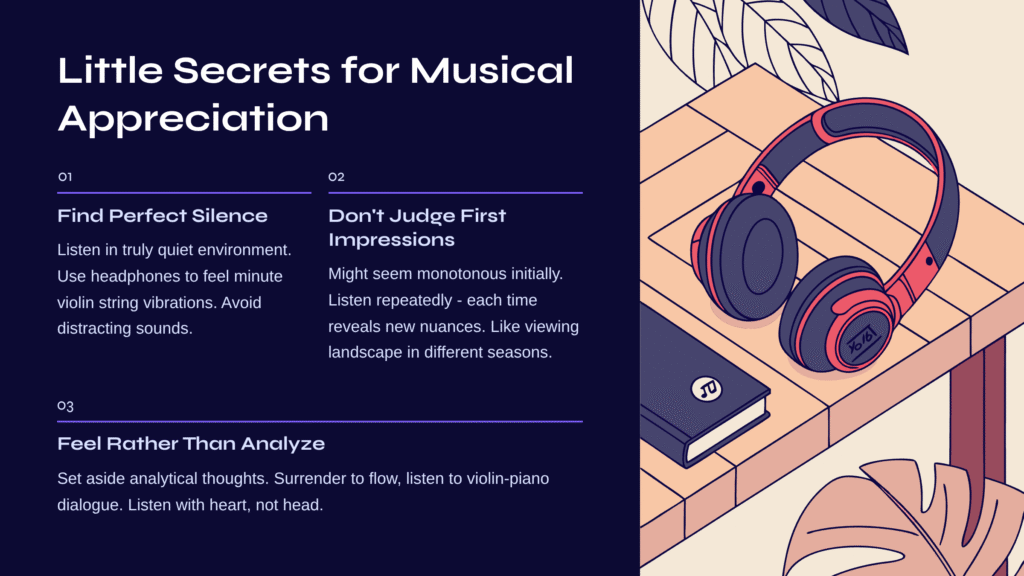
Little Secrets for Musical Appreciation
First Secret: Find Perfect Silence
This music must be heard in a truly quiet environment. Air conditioning sounds, car noise, even the ticking of a clock can be distracting. If possible, listen with headphones. You’ll be able to feel even the minute vibrations of the violin strings.
Second Secret: Don’t Be Disappointed by First Impressions
Honestly, when you first hear this piece, you might think, “What is this?” It might feel too monotonous. But listen two, three times repeatedly. Each listening reveals new nuances. Like viewing the same landscape in different seasons.
Third Secret: Feel Rather Than Analyze
When listening to this music, set aside analytical thoughts like “Which scale degree is being played now?” Simply surrender to the flow and listen to the dialogue created by violin and piano. Listening with your heart rather than your head is the way to feel this music’s true beauty.
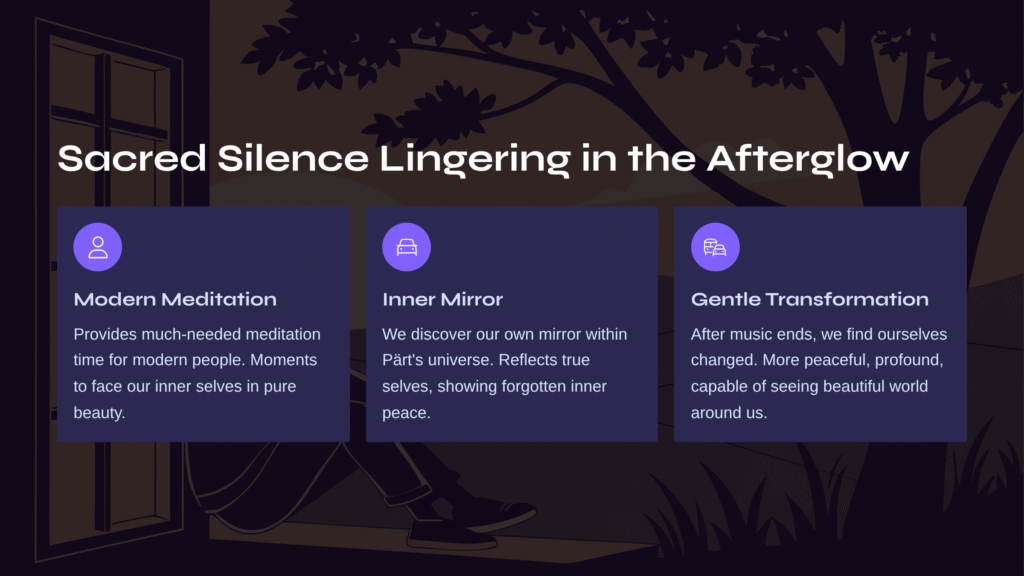
Sacred Silence Lingering in the Afterglow
“Spiegel im Spiegel” is not merely a classical piece. It’s a special gift that provides modern people with much-needed meditation time, moments to face our inner selves. In those brief ten minutes, we can escape daily noise and enter a world of pure beauty.
Within this small universe Pärt created, we discover our own mirror. That mirror reflects our true selves, sometimes showing us the inner peace we had forgotten. This is the power that true music possesses, and perhaps the message Arvo Pärt wanted to convey to us.
After the music ends, we find ourselves slightly changed in its afterglow. More peaceful, more profound, more capable of seeing the beautiful world around us.

Next Destination: Into the Memories of the Alhambra
After experiencing Pärt’s sacred silence, shall we journey to a completely different musical world? Francisco Tárrega’s immortal masterpiece “Recuerdos de la Alhambra” (Memories of the Alhambra), left by the 19th-century Spanish guitar master.
If Pärt’s music is like the deep, quiet forests of Northern Europe, then Tárrega’s music is like a golden palace spread beneath the burning sun of Southern Spain. Through the tremolo technique created by a single guitar, you can experience a fantastical sound like water droplets endlessly falling from a fountain.
While Pärt guided us inward through contemporary spirituality, Tárrega will lead us into beautiful memories of the past through romantic nostalgia. From the dialogue of violin and piano to the monologue of solo guitar, another journey of emotion awaits.
